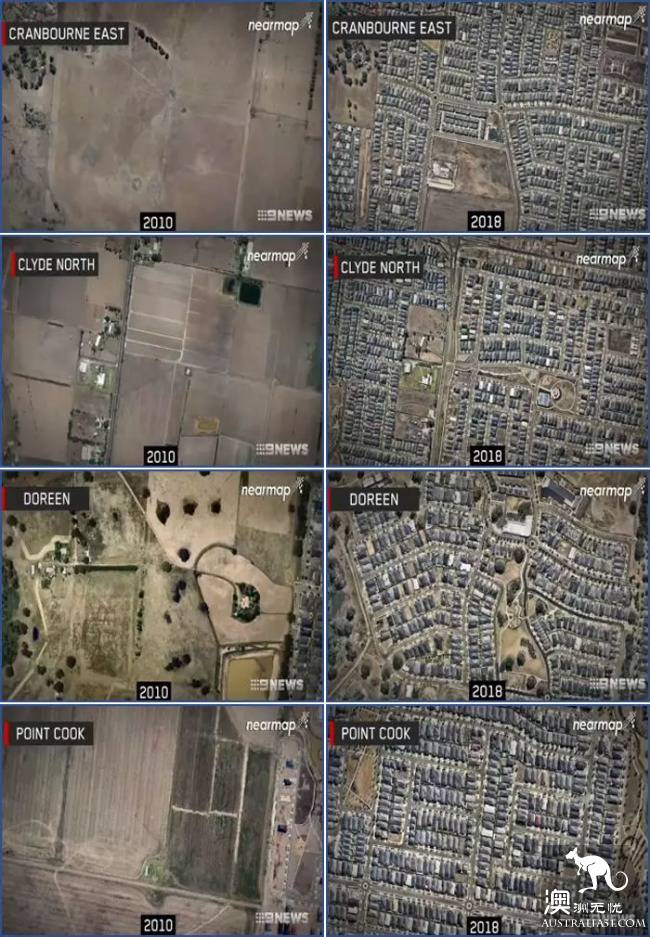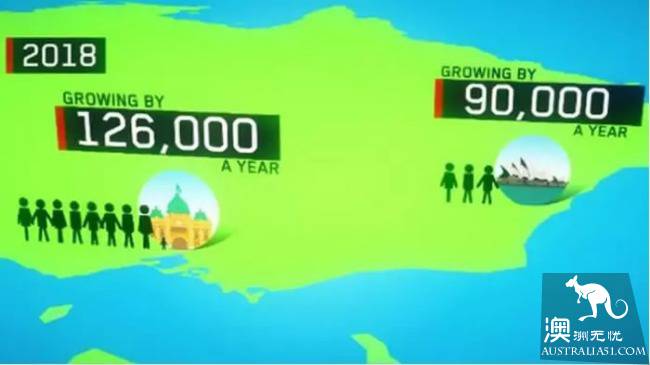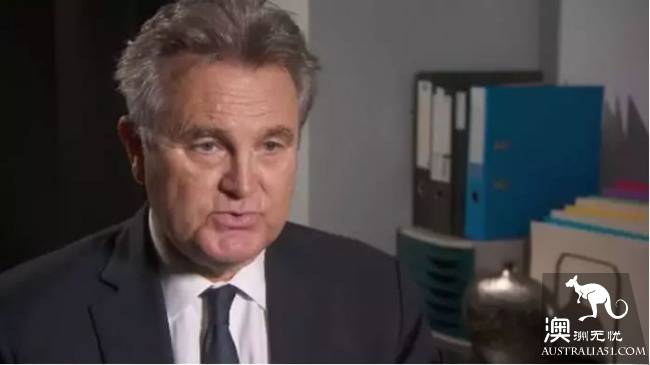Recently, Australia 9 exposed a set of pictures, see this group of people are stunned! No one would have thought that these places were desolate a few years ago, but now they have turned out to be like this
1, amazing change
Station 9, which exposed a set of near maps that compared the dramatic changes in Melbourne`s districts over the past eight years, including Clyde..

(photo source: 9 News)
These recent maps also witness the rapid transformation of the Greater Melbourne region. Only eight years ago, these places were a dream place for developers, but now all kinds of houses can be seen everywhere. Waves of construction from Point Cook to Doreen and Cranbourne East, have sprung up in Melbourne.
2. Melbourne is well ahead of the population growth rate
If compared with Sydney, Melbourne`s population growth rate is definitely far ahead. Because, according to statistics, Melbourne is now adding 126000 people a year, compared with only 90000 in the new state.
The reason behind the win, though, is that people in Melbourne have more affordable housing and land costs than Sydney. For example, if you have a sum of money to buy a property or a piece of land in the western suburbs of Melbourne, the same amount of money can`t be bought anywhere in Sydney.

(photo source: 9 News)
The fast-growing population has expanded the city, but it has also caused concern. In a generation, Melbourne`s population has grown tenfold, says demographer Salter (Bernard Salt), director of operations at Economic Research and forecasting. In 1993, the city`s population grew by just 12000 in the early days of Jeff Kenneth`s era.
At present, Australia`s overall population of more than 25 million, and is growing at an annual rate of four hundred thousand. Melbourne`s population of 4.7 million, or 18.8 percent of Australia`s population, is forecast to continue to grow. Melbourne`s population could reach 5 million by 2021. By 2050, that number is expected to soar to 8 million.

(photo source: 9 News)
According to current trends, Melbourne is likely to replace Sydney as Australia`s most populous city in the 1930s, well ahead of previous estimates from government, Victoria. Faced with such a dramatic population gain, Mr. Salter said: "it`s a bit like a car driving too fast. It`s getting faster, but it`s more dangerous."

(photo source: 9 News)
After all, too fast population growth can lead to traffic jams, employment difficulties, and a decline in the volume of natural resources. Melbourne`s traffic is already under pressure.
On the outskirts of Melbourne, the evening peak will start at 2:30 at the earliest and end at 8:30 at the latest, according to figures released by the state infrastructure agency, as people`s daily travel distances will increase by 25 percent. Drivers are likely to spend 20% more time on traffic in the next 12 years due to severe traffic jams. Not only the roads will be blocked, but also the key suburban railway lines.

(photo source: Infrastructure Victoria)
3. Blueprint
In order to improve this situation and solve the problems brought about by population growth, it is most important to plan for it as a whole. According to Salter, Melbourne needs to include the following in its development plan up to 2050: new 1.6 million homes; creation of 1.5 million new jobs; The number of public transport trips a day reached 10 million, an increase of 80 per cent from now on. In addition, he thinks it is time to assess the number of people pouring into the city. Government, Victoria, needs to develop a macro population growth strategy and now begin to assess and limit the size of the population that emigrates to cities. In other words, Melbourne would be better off slowing down the number of people moving into the city in the face of the threat of "population explosion". But this is not a requirement that Melbourne completely ban the entry of migrants, only a slight tightening of access measures.

